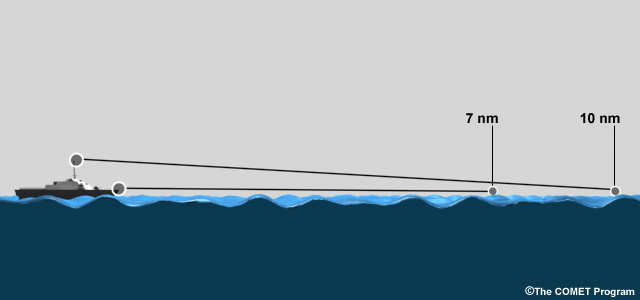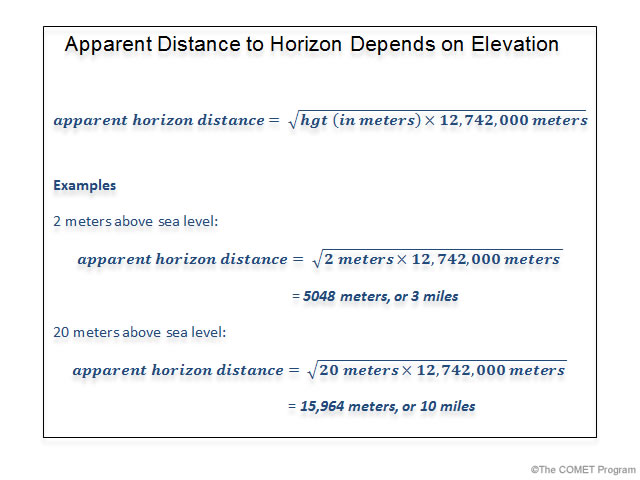Land-based vs. Sea-based Observations

Estimating visibility depends on your elevation above sea level. At sea, small differences in the height at which the observation is taken can lead to large differences in the estimated visibility.

Even under clear conditions, the distance you will be able to view will depend on the height from which you are taking the observation.
Here is a rule of thumb for estimating distances to the horizon based on your observation height above the water:
To find the distance to the horizon, find your height above the water in meters and multiply this value by the diameter of Earth: 12,742,000 meters. Take the square root.
If your eyes are at a height of about 2 meters, you can see 5000 meters, or about 3 miles.

Because of the ship's mobility, the surrounding environment is constantly changing. This motion prevents the use of permanent visibility markers. From a moving ship, relative positions of stationary objects can change substantially within a 10-minute period and the relative position of another moving ship can change within a very short time. Knowing these limitations, there are still several aids that can be used to help estimate visibility from a ship:
- Landmasses (coastlines or islands)-- use navigation charts to determine the direction and distance to prominent features such as hills, towers, and cities or towns.
- Other ships-- use radar to find the direction and distance to other ships.
- Rain showers--radar can provide information about the direction and distance of showers from the ship.
- Horizon and sea surface-- relate the clarity of the line of the horizon (essentially, the line between sea and air) with visibilities of 7 nm or greater for unrestricted views, and with visibilities of less than 6 nm for restricted views.

When the view of the horizon is obstructed, the observer should move to as many locations as necessary and practical to view as much of the horizon as possible. On land, you will have permanent markers to help you determine the visibility. Trees, hills, and other natural features are part of what defines the horizon and are not considered obstructions.